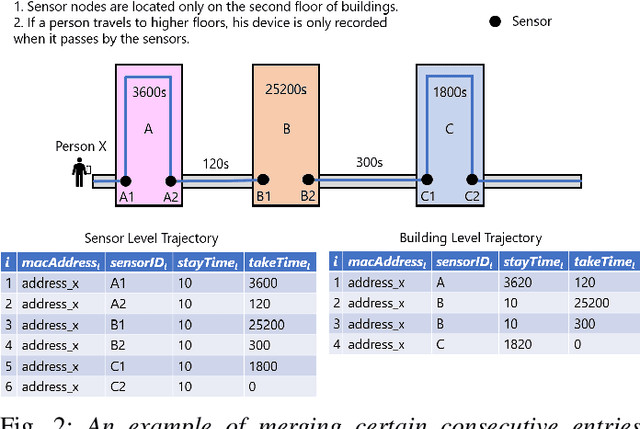Bige Tuncer
Multiple-Perspective Clustering of Passive Wi-Fi Sensing Trajectory Data
Dec 22, 2020



Abstract:Information about the spatiotemporal flow of humans within an urban context has a wide plethora of applications. Currently, although there are many different approaches to collect such data, there lacks a standardized framework to analyze it. The focus of this paper is on the analysis of the data collected through passive Wi-Fi sensing, as such passively collected data can have a wide coverage at low cost. We propose a systematic approach by using unsupervised machine learning methods, namely k-means clustering and hierarchical agglomerative clustering (HAC) to analyze data collected through such a passive Wi-Fi sniffing method. We examine three aspects of clustering of the data, namely by time, by person, and by location, and we present the results obtained by applying our proposed approach on a real-world dataset collected over five months.
 Add to Chrome
Add to Chrome Add to Firefox
Add to Firefox Add to Edge
Add to Edge